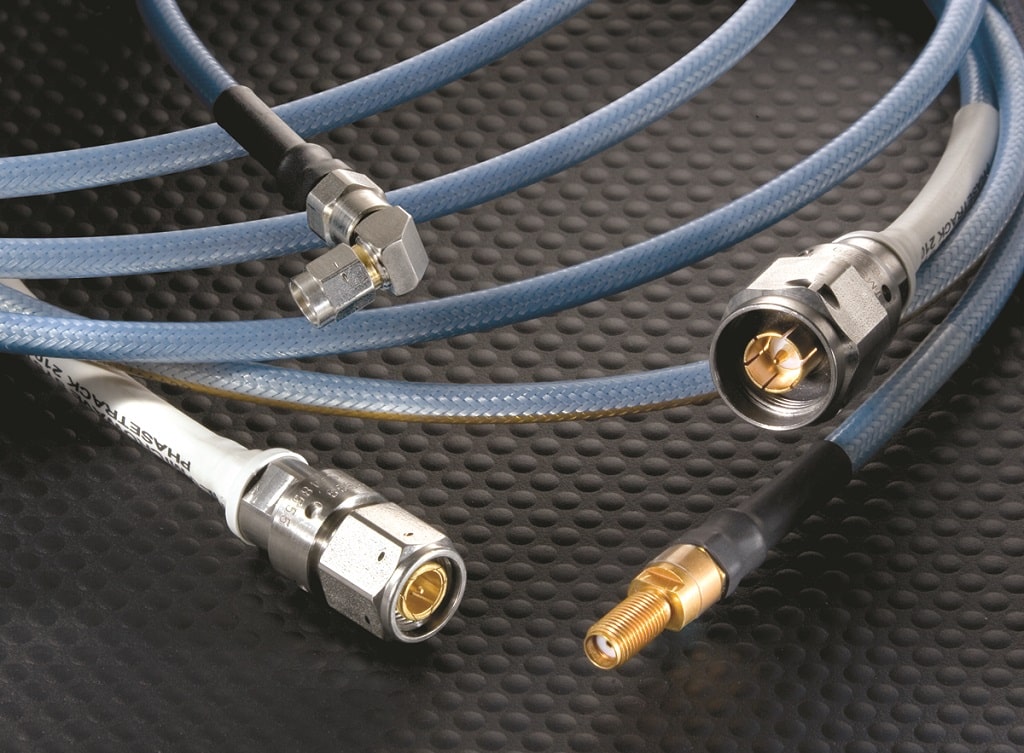Phase 101 Webinar Summary
Phase 101 Webinar Summary The webinar is the first in
Phase is a crucial parameter for detection and measurement in many systems
After the initial match, the coaxial cables must also stay consistent over varying temperatures. As temperatures change, coaxial cables do not precisely track together; the phase match degrades just slightly. That small amount of degradation can adversely affect system performance. Therefore, cable assemblies must be optimized to minimize phase change over temperature.
The concept of phase starts with the fact that a microwave signal propagates in the form of a sine wave. For every sine wave cycle, 360 degrees of electrical length will accumulate. For example, in the higher frequency range of 5G applications, millions or billions of cycles per second will accumulate. The wavelengths are very short, so maintaining phase accuracy across a cable length becomes exponentially more challenging as frequency increases.
Electronically steered antennas used in many RF applications employ an array of radiating elements to steer antenna beams rather than physically moving an antenna. Beam steering for transmission or reception is performed by adjusting the phase of the individual antenna elements in the array. The antenna array elements are each fed by high-frequency transmission lines. The accuracy of the signal phase presented to each array element depends on the phase accuracy and stability of the cable assemblies.
Phase is also responsible for precision in some time-sensitive satellite applications like GPS systems, radar and more. The phase must be accurately controlled in the components within those systems, and phase-stable cable assemblies are essential in today’s increasingly sophisticated electronic systems.

Frequency, time delay, and physical properties like length, dielectric constant and propagation velocity affect electrical length. Coaxial cables contain a consistent dielectric material throughout the length of the cable and hence have a constant velocity factor. Even though the material is consistent, environmental factors can alter the electrical properties of the cables – like temperature fluctuations, flexure, handling, twisting, pulling, and crushing that can happen to a cable during installation and maintenance. A cable assembly also gets electrically longer as it gets colder and shorter as it gets warmer. Electrical length is proportional to physical length. Metals expand as they get warmer and contract as they get colder, but as that happens, the dielectric constant expands and contracts and its density changes, altering the velocity. The dielectric effects of the plastic offset and dominate the metal effects.
RF coaxial cables often use PTFE dielectrics because they can operate across a broad temperature range (-50C to 150C) and have a low dielectric loss. The challenge with PTFE is the material goes through a phase transition around room temperature, causing the phase length to vary non-linearly with temperature and introducing significant hysteresis as the temperatures vary up and down. Controlling phased array antennas with PTFE-based cables is challenging in varying temperature environments. At Times, we have extensive experience designing cable assemblies to minimize temperature effects on phase through the use of special materials, such as silicon dioxide and our proprietary dielectrics called TF4™ and TF5™, proprietary foam polyethylene blended dielectrics.
Not sure what you're looking for? Unable to find what you need? Get in touch with our team of experts who can help guide you towards a solution.
PhaseTrack® cable assemblies are designed for applications demanding minimal phase change over temperature. All PhaseTrack cables use a proprietary TF4™ dielectric that does not have the abrupt shift in the phase that occurs with solid- or tape-wrapped PTFE-based products under normal room ambient temperature conditions.
The SiO2 semi-rigid cable assemblies are used in applications demanding the ultimate in phase tracking performance and extreme environments.
Interested in receiving email newsletters and other updates from Times? Subscribe now!